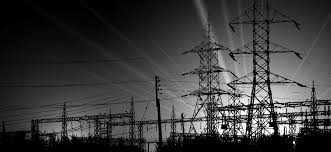
The energy crisis in Pakistan causes effects and solutions
The energy crisis in Pakistan causes effects and solutions
- Introduction
- Overview of Pakistan’s Energy Landscape
- The Looming Energy Crisis: A Prelude
- Causes of the Energy Crisis
- Insufficient Energy Generation Capacity
- Dependence on Non-Renewable Energy Sources
- Circular Debt and Financial Challenges
- Effects of the Energy Crisis
- Economic Impact and Productivity Constraints
- Social Implications: Health and Quality of Life
- Stifling Industrial Growth and Investment
- Challenges and Considerations
- Balancing Energy Demand and Supply
- Environmental Concerns and Climate Commitments
- Addressing Inefficiencies and Infrastructure Gaps
- Sustainable Solutions
- Diversification of Energy Sources
- Accelerating Renewable Energy Adoption
- Energy Efficiency and Conservation Measures
- Overhauling Energy Sector Governance
- Government Initiatives and Policies
- Power Sector Reforms and Long-Term Plans
- Investment Incentives for Renewable Energy
- Initiatives to Tackle Circular Debt
- International Collaborations
- Bilateral and Multilateral Partnerships
- Learning from Global Energy Transition Models
- Community Engagement and Awareness
- Educating Citizens about Energy Conservation
- Promoting Proactive Energy Consumption Patterns
- Future Prospects
- A Transition Towards Energy Security
- Realizing Sustainable Development Goals
- Conclusion
- A Call to Action: Collective Efforts to Overcome the Energy Crisis
1. Introduction:
Pakistan’s energy crisis poses a multifaceted challenge that impacts various aspects of the nation’s development. This comprehensive report delves into the causes behind the crisis, and its widespread effects, and proposes sustainable solutions to steer the country towards a brighter energy future.
2. Causes of the Energy Crisis:
The energy crisis in Pakistan has been driven by factors such as inadequate energy generation capacity, a heavy reliance on non-renewable energy sources, and the weight of circular debt within the energy sector.
3. Effects of the Energy Crisis:
The consequences of the energy crisis permeate every facet of society, including the economy, public health, and industrial growth. High costs, power outages, and reduced productivity have hindered Pakistan’s progress.
4. Challenges and Considerations:
Balancing energy demand and supply is a delicate challenge, further complicated by environmental concerns and infrastructure limitations. The need for a holistic approach is evident.
5. Sustainable Solutions:
The road to energy security involves diversifying energy sources, prioritizing renewable energy adoption, embracing energy-efficient practices, and reforming energy sector governance.
6. Government Initiatives and Policies:
Pakistan’s government has introduced power sector reforms, incentivized investment in renewable energy, and taken measures to address the circular debt issue.
7. International Collaborations:
Bilateral and multilateral partnerships play a pivotal role in sharing knowledge and experiences to aid Pakistan’s energy transition journey.
8. Community Engagement and Awareness:
Educating citizens about energy conservation and promoting responsible consumption habits can collectively contribute to reducing energy demand.
9. Future Prospects:
With the right mix of policies, investments, and societal commitment, Pakistan can move closer to achieving energy security while contributing to sustainable development goals.
10. Conclusion:
The energy crisis in Pakistan necessitates a concerted effort by all stakeholders to usher in a new era of energy resilience. By understanding the causes, mitigating effects, and implementing sustainable solutions, Pakistan can forge a path toward energy security and sustainable growth.
